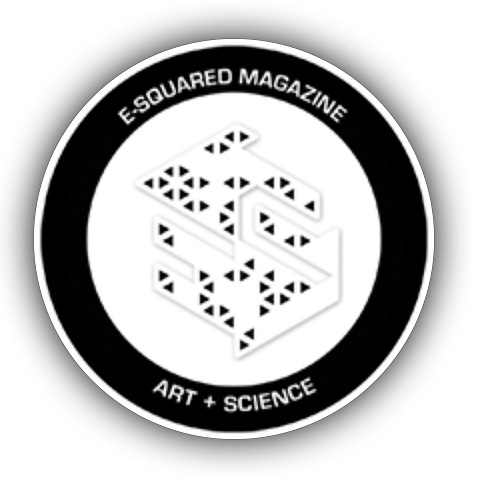What Even Is An NFT, Anyway?
/Have NFTs and cryptocurrency ever come up in one of your conversations, but you’ve been too afraid to ask what it is? Have you ever found yourself curious as to what all the buzz is about? You’re not alone. Here, you will learn about what an NFT actually is, why it is important, and how you can invest in an NFT of your own.
What is an NFT?
This is a question on most people’s minds when they hear this acronym. Simply put, NFT stands for ‘non-fungible token.’ According to Forbes Insider, “an NFT is a digital asset that represents real-world objects like art, music, in-game items and videos,” as well as collectibles, virtual avatars, and video game skins. (1) You can buy and sell them virtually using cryptocurrency, an online form of payment. Though the concept of an NFT may be tricky to grasp at first (quite literally), try imagining that you are buying an artwork. However, instead of that artwork being physical, it is a digital and singularly unique or limited edition just like physical art.
What makes NFTs different from cryptocurrencies like Bitcoin or Ethereum is that cryptocurrencies are ‘fungible,’ which means they can be exchanged. For example, one single Bitcoin is equivalent to another single Bitcoin. On the contrary, NFTs have a digital signature that makes them unable to be exchanged for anything else. Thus, they are non-fungible. (3)
What does it mean when you buy an NFT?
Why should you buy one when there are copies all over the internet?
To answer this, I will use a simple analogy. If you were to go online and search “Mona Lisa For Sale,” a thousand prints of the Mona Lisa would pop up on your screen at ranging prices. However, owning a copy of the Mona Lisa isn’t the same thing as owning the original Mona Lisa. Owning an NFT is like owning a rare original digital artwork. Having an original NFT is special and exciting.
But beware, in the same way, that there are thousands of copies of the Mona Lisa, it is possible there may still be copies of your NFT. In some cases, it can be hard to tell the difference between a copy of an NFT and the original because there are no visual differences. However, owning the property rights to an NFT is valuable because you own the piece of code in a blockchain of an NFT. Think of a code in a blockchain as the original brushstrokes on the Mona Lisa.
Who creates NFTs? Who buys them?
Technically, anyone can create an NFT. However, typically artists and digital artists will create NFTs because they can see the value in them. Because of NFTs, artists no longer have to rely solely on auctions or gallery showings to sell their work. Instead, they can offer an NFT directly to the collector.
Artists can also ‘build a royalty’ into their NFTs, so they can receive a percentage of the sales whenever their art is sold to a new owner. This is a special feature of NFTs to artists because otherwise, they typically do not receive proceeds after their work is initially sold. (1)
In the same way, anyone who has the talent can create NFTs; anyone who sees value in NFTs can buy them, as long as they have cryptocurrency at hand. This brings me to my next question:
How do you buy an NFT?
Before you can begin collecting NFTs, there are a few things you have to do:
First, you need to obtain your own digital wallet. A digital wallet is a virtual place for you to store cryptocurrencies (the currency you’ll need to pay for NFTs) and the NFTs you purchase.
Second, you need to purchase cryptocurrencies, such as Ether or Bitcoin. According to Forbes, “you can buy crypto using a credit card on platforms like Coinbase, Kraken, eToro and even PayPal and Robinhood now.” (1) Make sure that the cryptocurrency you purchase is accepted by your NFT purchaser. Also, keep an eye out for fees before purchasing cryptocurrencies––it is best to do research beforehand. (3)
Where can you buy an NFT?
There are several popular NFT Marketplaces where you can purchase NFTs. The top three are OpenSea.io, Rarible, and Foundation. To get started on any of these platforms, all you need to do is create an account. OpenSea.io and Rarible are very similar platforms, as they are open marketplaces that allow artists to issue and sell NFTs and collectors to purchase. Foundation is a bit more exclusive––there is a cost of entry, and you have to receive invitations from artists and creators to post their art. (1)
Is NFT bad for the environment?
According to a few scientific, peer-reviewed studies on the topic, NFTs have been known to leave a carbon footprint. These studies found that “one NFT transaction is likely to have a carbon footprint more than 14 times that of mailing an art print.” (4) These calculations are what many base their judgments on whether a carbon footprint of this quantity is acceptable or not for selling art.
Many artists feel that a single artwork transaction should not produce that high of a carbon footprint, so they avoid creating and selling NFTs altogether. However, some have discovered better alternatives for creating and selling them. For example, partnering companies like Pachama work to reduce emissions, draw down atmospheric carbon, and take measurements to verify carbon drawdown data. (5) I was so happy to get to partner with Superchief Gallery NFT to create my first NFT artwork because they pay Pachama to make the NFT art 3x carbon negative. At this time I do not plan to create additional NFT artworks.








